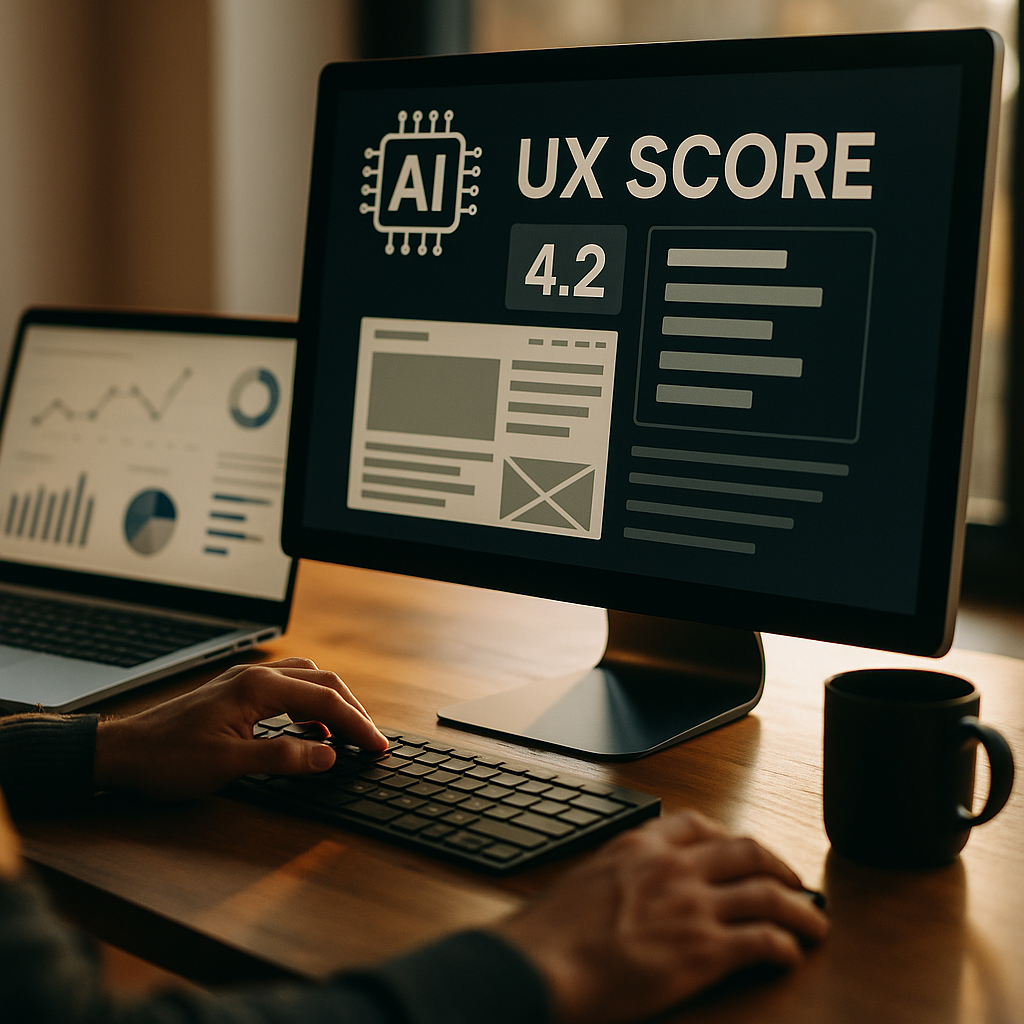Using AI to analyze and score the quality of your website’s user experience (UX) offers businesses a data-driven competitive edge in 2025. With AI, you can gain powerful, real-time insights into visitors’ behaviors and create smoother digital journeys. Curious how AI-powered UX analysis works and what it can do for your site’s success? Let’s dive in.
Why UX Scoring Matters for Website Performance
UX evaluation is more than a design trend—it’s a business imperative. According to Forrester’s 2024 CX Index, websites with optimized user experience saw conversion rates improve by up to 35%. In the age of instant gratification, even minor usability flaws can drive users away to competitors. A reliable UX scoring process identifies friction points and translates them into actionable improvements. With AI, this process becomes faster, objective, and scalable across even the largest digital platforms.
How AI-Powered UX Analysis Works
AI-driven website testing leverages machine learning, computer vision, and advanced behavioral analytics to examine every aspect of your site. Here’s what typically happens behind the scenes:
- Session Replay & Heatmaps: AI records, segments, and analyzes user sessions, tracking mouse movements, clicks, scrolls, and forms.
- Heuristic Evaluation: Natural language processing algorithms benchmark your content against usability standards and best practices.
- Performance Metrics: AI monitors page load speed, accessibility compliance, and mobile responsiveness.
- Predictive Analytics: By identifying patterns, AI predicts points of user frustration, likely bounce hotspots, and conversion drop-offs.
This automated approach eliminates subjectivity, surfaces hidden issues, and empowers product owners to make high-impact changes rapidly.
The Benefits of Using AI for Website Usability Assessment
Website usability assessment through AI offers transformative advantages for digital brands in 2025:
- Speed & Scalability: Analyze thousands of pages and millions of visits in seconds, beyond the capacity of manual audits.
- Objective Scoring: Remove human bias from the UX evaluation, providing standardized quality grades site-wide.
- Continuous Monitoring: Track changes over time and get alerts when new issues degrade the user experience.
- Personalization Insights: AI segments data by user type, device, or location, enabling customized optimizations.
- Increased ROI: Actionable insights lead to higher customer satisfaction, lower acquisition costs, and increased lifetime value.
By deploying AI-driven assessment, leading businesses future-proof their UX and keep users engaged in a rapidly evolving online landscape.
Key Metrics Measured by AI-Based UX Scoring Tools
To ensure AI-based website scoring delivers actionable results, it measures a blend of quantitative and qualitative metrics. The most impactful indicators include:
- Navigation Efficiency: How easily users move between pages and access core information.
- Accessibility Compliance: Automated checks for ADA, WCAG, and other global standards.
- Engagement Depth: Time on site, pages per session, and click-through rates.
- Drop-off Analysis: Identifies bottlenecks in forms, shopping carts, or conversion funnels.
- Sentiment Analysis: AI interprets user feedback from surveys and reviews, revealing dissatisfaction drivers.
- Error Detection: Discovers broken links, confusing workflows, and inconsistent calls-to-action.
By prioritizing fixes according to these metrics, web teams can allocate resources for maximum business impact.
Implementing AI-Powered User Experience Tools on Your Website
Introducing AI user experience tools to your site doesn’t require a full overhaul. Here’s a step-by-step approach:
- Identify your goals: Conversion boost, increased engagement, or improved accessibility?
- Select an AI platform: Choose tools with strong data privacy, transparent algorithms, and proven effectiveness.
- Integrate and configure: Install tracking scripts, syncing with existing analytics or CRM solutions.
- Analyze and interpret reports: Focus on the highest-rated issues and create a prioritized backlog for remediation.
- Run A/B tests: Use AI-generated recommendations to test new layouts, CTAs, or content blocks – then measure improvements.
- Monitor continuously: Set up regular, automated UX checkups to catch new issues and optimize iteratively.
Many leading tools provide guided onboarding, ensuring even teams with minimal technical background can harness AI’s capabilities.
Best Practices: Ensuring Accuracy and EEAT in AI UX Analysis
To maximize the credibility and helpfulness of AI content quality assessments, grounding your process in EEAT principles is essential:
- Experience: Validate AI findings with user testing and real customer feedback for nuanced insights.
- Expertise: Collaborate with certified UX professionals to interpret AI data correctly and contextualize recommendations.
- Authoritativeness: Use reputable AI tools recognized for transparency, compliance, and continuous algorithm updates.
- Trustworthiness: Prioritize user privacy, data security, and ethical data collection in every step of the analysis.
Blending cutting-edge AI with human expertise builds lasting digital trust, resulting in better business outcomes and satisfied users.
Frequently Asked Questions
-
How accurate are AI-based UX scoring tools in 2025?
Today’s leading AI-based UX tools can identify 80-95% of common usability and conversion barriers thanks to advances in deep learning and behavioral modeling. Human review and user testing are still advised for nuanced experiences and UI changes.
-
Can AI tools analyze mobile user experiences as well?
Yes. Top-tier UX analysis solutions provide device-specific insights, including mobile navigation issues, tap targets, and responsive design problems, ensuring a seamless experience across all screens.
-
How often should I assess my website’s UX using AI?
For dynamic or e-commerce websites, monthly or real-time continuous assessment is recommended. Static sites may only need quarterly reviews, unless you launch updates or new features frequently.
-
Is it possible to integrate AI UX scoring with other analytics tools?
Absolutely. Most AI UX solutions offer integrations with Google Analytics, CRM platforms, heatmapping tools, and marketing automation suites, allowing unified reporting and streamlined workflows.
-
Do AI UX assessments comply with privacy laws?
Compliant AI tools anonymize user data, respect do-not-track signals, and adhere to privacy requirements such as GDPR and CCPA. Always validate your tool’s privacy credentials before implementation.
Leveraging AI to analyze and score your website’s user experience is now a must for forward-thinking brands. By embracing continuous, data-driven UX assessment, you’ll delight your users, stay a step ahead of competitors, and unlock new growth opportunities in 2025.
